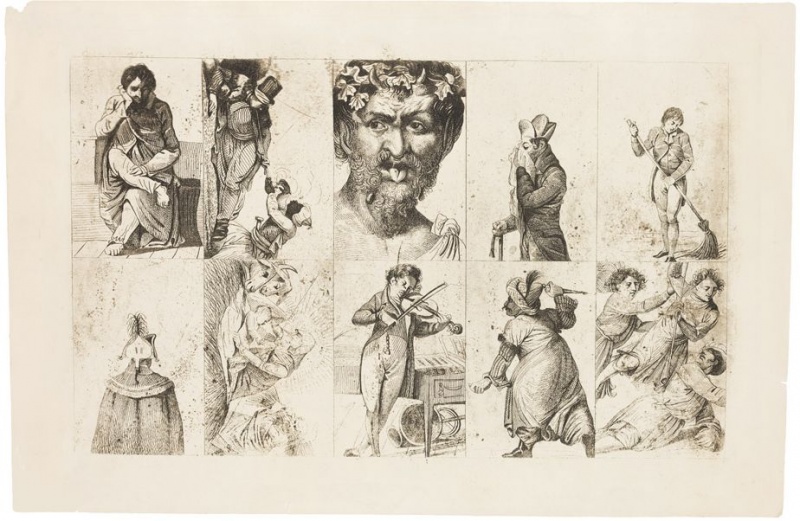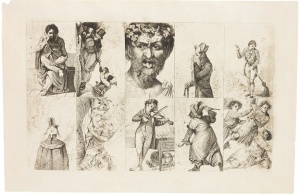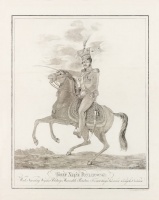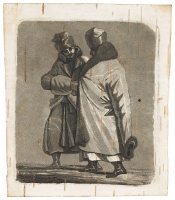

Fantastic Cards
| Author: |
Jan Gottlieb Kisling (1790–1846) |
| Created: | 1828–1831 |
| Material: | paper |
| Technique: | etching |
| Dimensions: | 22.80 × 34.50 cm |
After Jan Rustem (1762–1835).
80 cartes de fantaisie dessinées par J. Rustem gravées par G. Kisling, Wilno, 1828–1831.
Jan Rustem (1762–1835) put most of his figure drawings of mythological and religious subjects, and of various domestic scenes drawn from life, into his ‘Fantastic Cards’ series. They enjoyed immense popularity among art lovers at the time. The idea for the cards was not an original one: cards in which symbols were integrated into different figure drawings were popular in Europe in the late 18th and early 19th century. They were used for solitaire and fortune telling, but not for playing. In drawing the cards, Rustem combined different themes, motifs and cultural references, thus expanding the visual range of Lithuanian art. He turned his attention to mundane events that had never been depicted in art, and to various types of people who could be seen on the streets, such as barbers, caretakers, bricklayers, idle aristocrats, people dressed up for carnivals, musicians, acrobats, and many others. A hundred of these drawings were engraved by Jan Gottlieb Kisling (1790–1846) after 1814 and sold by subscription. When the censors banned some of the cards showing religious subjects, the printing of the cards was temporarily halted. Between 1828 and 1831, a series of etchings of 80 cards was published. It came out again several times later, including a lithographed version.
Text author Rūta Janonienė
Source: Law firm Valiunas Ellex art album RES PUBLICA (2018). Compiler and author Rūta JanonienėExpositions: “The Age of Romanticism", 11 September 2019 – 6 August 2020, Lithuanian Art Centre TARTLE (Užupio St. 40, Vilnius). Curator Rūta Janonienė.









